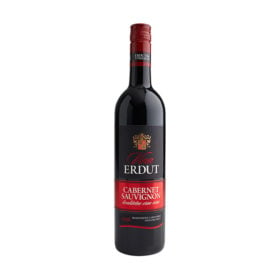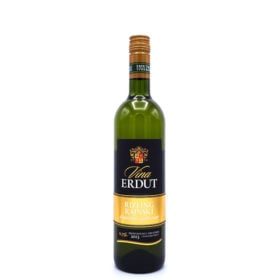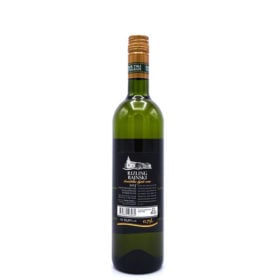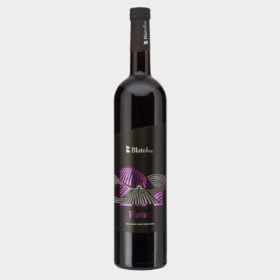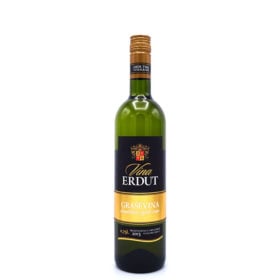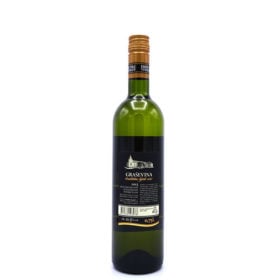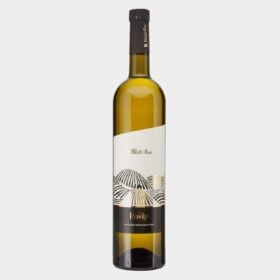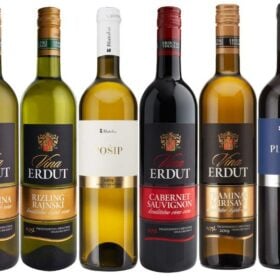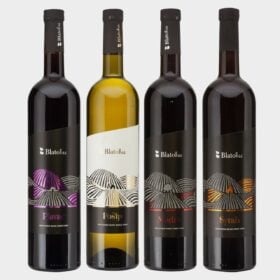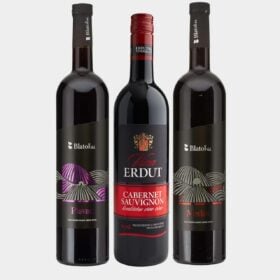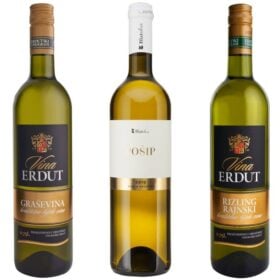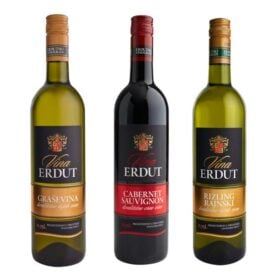Wines are usually blended to create a great flavor profile from different barrels, vineyard plots or grape varieties. Blending wine allows for experimentation and creativity, and can produce unique flavors that would not be possible with a single wine.
Other terms used for this same process are, assembly, cépage, vintage, blend, blend. In most cases it is the same, although there may be some differences in the meaning of these terminologies per country or region.
Content
The art of wine blending
The art of blending wine takes years (or a lifetime) to master. Major winemakers often use a combination of technical analysis and taste to create the perfect blend. However, recipes can only be used once, as each year's weather creates different conditions that change how grapes ripen and make wine.
This iterative process of trial and error can take tens if not hundreds of attempts before the perfect blend is found. The goal is to create a wine that showcases the best features of each grape variety used. Blending allows winemakers to experiment with different flavors and aroma's to create a unique wine that cannot be replicated anywhere else. Ultimately, it is the skill and creativity of the blender that determines the wine.

Famous blends of wine and why they are tasty
When you look at wine blends on the market today, do you see the common themes? Cabernet Sauvignon is often mixed with Merlot because they share the same characteristics and together create a more complex taste. If Syrah / Shiraz is often blended with Grenache and Mourvèdre because these two grapes add spicy and earthy flavors that Syrah complement nicely.
Blending wine is an art form that has been around for centuries. By combining different types of grapes, winemakers can create unique flavors that would not be possible if they only used one grape variety. Blending also helps to make up for any shortcomings of certain grape varieties. For example, if a vineyard has only a small amount of Merlotgrapes, the winemaker can mix them with Cabernet Sauvignon to create a fuller wine.
Is every wine suitable as a blend wine?
No two wines are exactly alike, and this is especially true when it comes to blending different wines. To create a successful varietal wine, it is important to combine compatible wines that complement each other's flavors.
Not all wines are suitable for blending, so winemakers do a lot of research into different properties before selecting them as a blend wine. Blended wines are made by mixing different types of wine. This can be done in different ways, depending on the type of wine being mixed.
For example, red wines can be mixed with White wine, or with other species red wines† The different types of wine each contribute their own unique flavors and characteristics to the blend.
Blending wine is a great way to create a unique drink that cannot be found anywhere else. It's also a great way to experiment with different types of wine and find new favorites.
Why do certain blends go so well together?
It's all about balance. When two or more grape varieties are combined, the end result should be a wine that is smooth and easy to drink, with no flavor dominating the other.
Blending different types of grapes allows winemakers to create wines that are truly unique and the "terroir" reflect the vineyard where they were grown.
How is a cépage wine made?
Making a wine blend is a complex process that takes into account different grape varieties and the "terroir" of the vineyard. In most cases, winemakers will ferment different grape varieties separately to produce the best wine possible.
Only after the wine has matured in barrels or put in tanks, does the winemaker start mixing different wines together. This process happens partly through taste and texture, but also through smell/ aroma of the wine itself. The yeast flavors can be overpowering and prevent the winemaker from making an accurate assessment of the wine.
Winemakers must rely on their senses for taste and smell to create a wine that is balanced and flavorful. Different grape varieties are usually best vinified separately and blended later.
This allows the winemaker to create a wine specific to their own taste and style. After the wine has been stored in barrels (or tanks), it is ready to be blended. At this point, the yeast flavors can be overwhelming and it's hard to use your sense of smell.
By drinking the wine taste and feel, however, the winemaker can get an idea of what the wine needs to balance. Often they add more of one grape variety to get the flavor they are looking for.
Once the blend is complete, it is bottled and shipped to stores for consumers to purchase. It's important to remember that not all wines are meant to be blended – Port, for example, is a field blend that is still made today. So if you come across a wine labeled as a "blend," it means the winemaker has put together different grape varieties to create a unique flavor profile.

Blending wine in classifying wine regions
By looking at several classic wine regions specializing in wine blending, we can learn more teaching methodology about modern wine assembling techniques.
Bordeaux, France
One of the most famous and respected wine regions for blending is Bordeaux, France. This region is known for its assembly of Cabernet Sauvignon en Merlot† Bordeaux's blending style takes advantage of the unique flavors that each grape variety brings out the best. So brings Cabernet Sauvignon powerful tannins and structure to the assembly, while Merlot rich fruit flavors and softer tannins involve. The best of both worlds when it comes to wine assembly.
Burgundy, France
Another well-known wine region for blending is Burgundy, France. This region is known for its Pinot Noir blend. The Burgundy style of blending takes advantage of the unique flavor profile of Pinot Noir† This grape variety has a wide variety of flavor profiles, making it the perfect blending candidate. Through various clones and vineyard plots of Pinot Noir blending, winemakers can create a unique wine with layers of flavor.
Italy
The third classic wine region to blend is Italy. This country is home to several w known for the region is France. Thisaux, ordeine regions, each with their own unique style of blending. One of the most famous Italian wine blends is the Chianti Classico. This wine is a blend of Sangiovese and Cabernet Sauvignon grapes. By cepagé of Sauvdet en Cabernet Sauvignon, winemakers can create a complex wine with notes of dark fruit, herbs and spices.
Spain
Spanish wines are typical cepagé wines from different grape varieties. This is because the climate and soil in Spain vary so widely from region to region that a cepagé of grape varieties is often necessary to create a wine with the desired flavor profile. In some regions, such as Rioja, almost all wines are cepagé wines. However, there are also some regions, such as Priorat, where single-variety wines are more common. Regardless of the region, most Spanish wines are cépages of different grape varieties. This gives wine drinkers in Spain a wide variety of flavor profiles to choose from, making Spanish wines some of the most interesting and complex in the world.
Croatia
As in Spain, mixing wine is very common in Croatia. This is because the climate and soil in Croatia differ so much from region to region that a cepagé of grape varieties is often necessary to create a wine with the desired flavor profile.
In some regions, such as Istria, many wines are blends. However, there are also some regions, such as Dalmatia, where wines of one variety are more common.
Regardless of the region, most Croatian wines are blends of different grape varieties. This gives wine drinkers in Croatia a wide variety of flavor profiles to choose from, making Croatian wines some of the most interesting and complex in the world.
Into the wine tradition Slavonia Dating back to the 8th century, the region is now home to over 60 wineries. The Plavac Mali-grape is whole Dalmatia en Istria grown, but the wines from Salvonia are known for their intense flavor and high alcohol content. Some of the most famous wines from Slavonia are Grasevina, Frankovka, Gewürztraminer, Chardonnay en Riesling.
Portugal
Most of the wine production in Portugal is devoted to assembalge wines. In fact, many of the country's best wines are the result of a careful blending of different grape varieties. This enables winemakers to create a wine that is unique "terroir" of their vineyards while meeting customer preferences.
Many Portuguese wines are made with a blend of Touriga Nacional, Tinta Roriz and Castelão-Francês grapes, producing a rich, full-bodied wine with spicy aroma's produces.
However, there are many other grape varieties that can be used in blends, resulting in a wide variety of styles. Blending techniques vary from producer to producer, but often involve fermenting different grape juices separately and then blending them before bottling.
This allows the winemaker to carefully control the character of the wine. While many Portuguese wines are exported, there are also some excellent local blends worth trying.
Classic French wine blends
Classic French wine blends are the benchmark for all wine blends. These blends have been developed over a long period of time in historic wine-producing regions. The climate in these areas is ideal for growing grape varieties that adapt well to each other. That's why you see Cabernet and Pinot Noir so often mixed together.
While it's not unheard of to find Cabernet with other Pinot-based wines, it's still a bit rare. This is probably due to the tradition of blending wines in these regions and to the suitability of the climate for certain grape varieties.
Bordeaux Cépage wine
Red blends from the Bordeaux region of France are known as Bordeaux blends. The five most popular grape varieties used in these blends are Cabernet Sauvignon, MerlotCabernet Franc, Malbec and Petit Verdot.
- Cabernet Sauvignon is a full-bodied wine with a spicy character and a great texture in the middle (tannin† It ends on an oak note, making it a big and long wine.
- Merlot en Cabernet Sauvignon are similar in many ways, but the slightly more cherry flavors of Merlot and more refined, pillow-shaped tannins compensate for the spicy character of the Cabernet varieties.
- However, the Bordeaux wines on the “right bank” have a predominance of Merlot and Cabernet Franc. Cabernet Franc has a peppery flavor that can be mixed with Merlot to add complexity and a dynamic finish.
- Malbec is a great variety for lovers of black fruit flavors with a smooth, luscious finish.
- Petit Verdot is often used in blends to create floral notes, tannin and add color. It is most commonly used in regions with warm climates, such as Spain, Argentina and Australia.
Rhône cépage wine
- Grenache, Syrah and Mourvèdre are the main grapes in the Rhône blend. This Red wine is inspired by the Southern Rhone of France and can contain up to 19 different grapes, including white grapes.
- Grenache is a light wine that is fruity and has a tingling finish. It is perfect for those who want a fruitier wine without all the heaviness.
- Syrah brings bold flavors of black fruit and meaty black pepper to the blend, as well as deep colors. The softer finish helps remove some of the tingle in Grenache.
- Mourvèdre is a robust wine with rich flavors of black fruit and a peppery aftertaste. It is perfect for meat dishes or cheese boards.

Regional differences in wine blending
Regional wine blends can be found all over the world. France is known for their unique blends, but other countries are also participating. Italy has developed several interesting blends, just like Croatia, Spain and Australia.
Each region has its own unique climate and range of grape varieties, so each blend is sure to be different. If you are looking for something new and unique, try a regional wine blend from elsewhere in the world instead of the traditional cépage wine from France. You will be amazed at how good the wine is!
- Tuscan wines: Super Tuscan wines are made with a blend of Sangiovese, Merlot, Cabernet Sauvignon and/or Cabernet Franc. These wines are known for their intense fruit flavors and graceful aging potential.
- Greek Cepagé Wine: The Greek Rapsani Blend is made with grapes that grow on the high slopes below Mount Olympus, including Xinomavro, Krasoto and Stravroto. These grapes offer raspberry and sun-dried tomato flavors with a high tannin en acidity. The blend brings rounder, softer, plum fruit and a smooth finish. Some believe that Stravroto adds color to the wine.
- Portuguese blend wine: Portugal's Douro Tinto Blend is a Red wine which typically includes Touriga Franca, Touriga Nacional and Tinta Roriz (also known as Tempranillo). These wines are black, floral and chocolatey from the Touriga Nacional grape and get acidity and complex savory notes due to the addition of Tinta Roriz.
- Croatian assemblage wines are among the most famous in the world. Many of these wines are made from a blend of two or more different grape varieties, giving them their unique flavor profile and character. Some of the most popular Croatian blended wines are Grasevina en Plavac Mali† Other popular blends are Vrbnička Žlahtina, Posip en Moslavac. If you're looking for a unique wine drinking experience, be sure to try some of Croatia's famous blended wines!
To conclude
So what's the verdict? Are wine blends worth the hype, or are they just a passing fad? Have your say! Leave a comment on this blog post and let us know what you think. Cheers!


